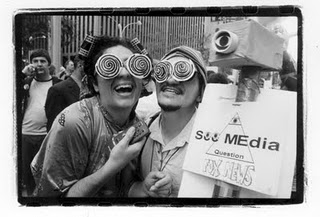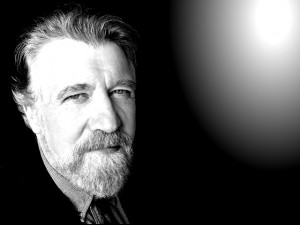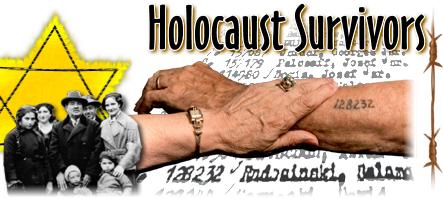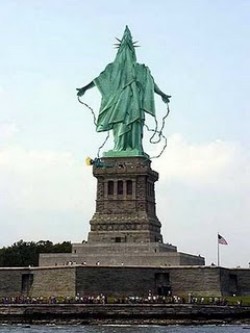Alex Constantine - April 4, 2023
- Shortly after 6 p.m. on April 4, 1968, Dr. Martin Luther King Jr. was shot and mortally wounded as he stood on the second-floor balcony outside his room at the Lorraine Motel in Memphis, Tenn. He was pronounced dead at 7:05 p.m. at St. Joseph Hospital.James Earl Ray, a 40-year-old convicted armed robber who had escaped from the Missouri State Penitentiary in Jefferson City, Mo., on April 23, 1967, pleaded guilty on March 10, 1969, in Shelby County (Tenn.) Criminal Court to the first degree murder of Dr. King. He was sentenced to 99 years at the State penitentiary.(a) Biography of James Earl Ray
 James Earl Ray was born on March 10, 1928, in Alton, Ill. The Ray family moved a few miles from Alton to Bowling Green, Mo., in 1930, and 5 years later they moved to near Ewing, Mo., where Ray received his elementary school education.
James Earl Ray was born on March 10, 1928, in Alton, Ill. The Ray family moved a few miles from Alton to Bowling Green, Mo., in 1930, and 5 years later they moved to near Ewing, Mo., where Ray received his elementary school education.
At age 16, Ray moved back to Alton, where he lived with his grandmother. He worked in the dye room of the International Shoe Tannery in nearby East Hartford, Ill. He was laid off in December 1945 and, 6 weeks later, enlisted in the Army. He was stationed in West Germany where he was charged with drunkenness and breaking arrest. Ray was discharged for ineptness and lack of adaptability for service in December 1948.
After his discharge, Ray returned to stay with his grandmother in Alton, Ill., and embarked on a life of odd jobs and jail sentences. He worked for the Dryden Rubber Co. in Chicago until he was laid off in September 1949, and then left for Los Angeles, Calif. On October 11, he was arrested for robbing a cafe and was sentenced to 90 days imprisonment.
Upon his release from jail in Los Angeles in the spring of 1950, he traveled back to Illinois, where he worked until May 1952. During this time he attempted to earn his high school diploma at night. He robbed a cab driver of $11.90 on May 6, 1952. He was found guilty of robbery and incarcerated at the State penitentiary at Joliet and later at the State prison farm in Pontiac until his release on March 12, 1954.
Ray then moved to Quincy, Ill. On March 7, 1955, Ray and an accomplice, Walter Rife, broke into the Kellersville, Ill., post office and stole 66 postal money orders as well as a validating stamp. The two men fled to Miami, Fla., but were arrested in Missouri on their return. Ray pleaded guilty to the robbery and, on July 1, 1955, was sentenced to 45 months at the Federal penitentiary in Leavenworth, Kans.
Ray was paroled from Leavenworth in early 1959. He robbed two grocery stores in St. Louis, Mo. and one in Alton during the summer Page 288
and fall of 1959. He was eventually captured and tried for the St. Louis robbery in December 1959. On March 17, 1960, he began serving a 20-year sentence at the Missouri State Penitentiary. Ray tried to escape November 1961 and again in March 1966. Following the second attempt, he was examined at the State hospital in Fulton, Mo, and determined capable of standing trial for escape.
On April 23, 1967, Ray did escape from the Missouri State Penitentiary. Over the following 11 1/2-month period, he traveled extensively in North America, residing in such cities as Chicago, Montreal, Birmingham, Los Angeles, and Atlanta. On the afternoon of April 1968, posing as John Willard, Ray rented a room at a Memphis roominghouse near the Lorraine Motel. That day, Dr. Martin Luther King, Jr., was assassinated as he stood on the second-floor balcony of the Lorraine Motel.
On May 7, 1968, the Shelby County Criminal Court named James Earl Ray in an indictment for the first-degree murder of Dr. King. An international manhunt culminated with Ray's capture at Heathrow Airport in London, England, on June 8, 1968. Following extradition proceedings in England, Ray was returned to the United States on July 19, 1968. Ray pleaded guilty to the murder of Dr. King on March 10, 1969. Judge W. Preston Battle sentenced him to 99 years in the penitentiary.
(b) The Committee's Investigation
With Ray's background and the record of his arrest, trial, conviction, and sentence as background, the committee undertook an exhaustive investigation of all available evidence bearing on Ray's involvement in the assassination of Dr. King. It conducted eight extensive interviews with Ray at Brushy Mountain State Penitentiary in Petros, Tenn., where he is serving the 99-year sentence for the murder of Dr. King.1 The committee also listened to 3 days of testimony by Ray in public session on August 16, 17, and 18, 1978, and it closely examined all known writings, tape recordings, transcripts and interviews made by or about Ray since his April 23, 1967, escape from the Missouri State Penitentiary, Further, the committee interviewed dozens of associates of Ray and hundreds of other witnesses, many of whom testified under oath in executive session or during 20 days of public hearings. Thousands of Government documents were scrutinized, particularly files of the Memphis Police Department and the FBI.2 Records from other agencies, such as the Department of State and the Central Intelligence Agency, were also reviewed. Scientific evidence was thoroughly analyzed by experts in such areas as firearms, forensic pathology and engineering.
1Ray's interviews with the committee were published as appendices to the committee hearings. See Appendix to the Hearings before the Select Committee on Assassinations, U.S. House of Representatives, 95th Congress, 2d Session (Washington, D.C.: U.S. Government Printing Office, 1979), vol. IX-XI (hereinafter-- Appendix to the HSCA-- MLK Hearings--).
2Because of widespread public allegations of FBI complicity in the assassination, the committee recognized that FBI files were potentially tainted. Ultimately, however, the committee's investigation uncovered no evidence to support the allegations (see section II D). The committee did note major deficiencies in the scope and method of the FBI's postassassination investigation (see section II E). Nevertheless, the committee was satisfied that it could consult FBI files as one of a number of sources of information in the case.
Page 289
Based on its investigation, the committee determined that James Earl Ray fired the shot that killed Dr. Martin Luther King, Jr. notoriety of the case. The precautions included: An entire cellblock to house Ray alone; steel doors on the entrances to the cellblock; steel plate covers on all the windows in the cellblock; two guards to watch Ray on each of three daily shifts; two closed-circuit television cameras to monitor the cellblock; constant illumination of the cellblock; special food selection; microphone surveillance within the cellblock.
The committee determined that Dr. McCarthy DeMere was the person best qualified to comment on Ray's physical condition during his incarceration at the Shelby County jail and the possible effect of the special precautions. DeMere served as Ray's physician from the time of his return to Memphis from England on July 19, 1968, until he was taken to the Tennessee State Penitentiary following his guilty plea. DeMere testified on Ray's health and conditions of confinement at a 1974 evidentiary hearing on Ray's petition for habeas corpus relief,(246) in an interview with the committee (247) and in a committee public hearing. (248) DeMere said Ray was in good health when he arrived and that it remained excellent during his stay at the jail.
In fact, DeMere told the committee, Ray gained weight while he was in the jail. Although Ray complained at first to DeMere about the lights in his cell, he never complained of losing sleep. The only medical complaints he made during his stay in the Shelby County jail concerned occasional headaches and nosebleeds.
The facilities that Ray occupied were comparable to a good motel suite and compared favorably to a first-grade suite in an ordinary hospital, according to DeMere. Additionally, DeMere told the committee he never saw Ray depressed and that he never exhibited any nervous tension. DeMere concluded that Ray was in better health when he left the Shelby County jail than when he entered it.
Ray argued that another aspect of the coercion was harassment of his family by the Federal Government and Foreman to get him to plead guilty. He charged specifically:
That the FBI threatened to have his father arrested and returned to a prison he had escaped from 40 years earlier; (249)
That the FBI burglarized the home of his sister, Carol Pepper; (250)
Page 323
That his brother, John Ray, had been sentenced to 18 years for bank robbery, an excessive sentence compared to those of his codefendants; (251)
That Foreman told him that his brother, Jerry Ray, would be arrested and charged with conspiracy in the assassination if Ray did not plead guilty;(252) and That Foreman tried to induce members of Ray's family to convince him he should plead guilty. (253)
The committee explored Ray's allegations concerning the FBI and Foreman. This task was complicated because Ray's word and that of members of his family provided the only support for his allegations. Given their probable bias, the committee was reluctant to accept such evidence without corroboration.
The committee found no independent evidence to support Ray's contention that the FBI burglarized his sister's house. The committee also determined that John Ray had been incarcerated on the bank charge almost 1 1/2 years after James entered his guilty plea.(254) Ray's brother, Jerry, was the original source of the story that the FBI threatened to rejail their father, and the committee was unable to substantiate this story.
Ray's allegations concerning Foreman were equally difficult to confirm. During an interview with the committee at the Brushy Mountain State Penitentiary, Petros, Tenn., Ray admitted that Foreman at no time said that the FBI had informed him of Jerry's imminent arrest, but Foreman had alluded to the possibility that he might be picked up. (255) No independent evidence was found to support the family's claim that Foreman tried to force them to induce Ray's plea.
The committee could not find substantiation for any of Ray's charges that his guilty plea was coerced--specifically, that his plea was induced by Foreman, that he was subjected to brutal conditions at the Shelby County jail, that his physical condition was permitted to deteriorate or that members of his family were pressured and harassed.
(d) Ray's belief a guilty plea would not preclude a new trial
Statements made by Ray both before and after his guilty plea raised questions about his understanding of the plea's finality. In an interview with the committee, Ray said his main purpose in entering the guilty plea was to get rid of Foreman. (256) He looked upon the plea as a technicality, a way out of jail in Memphis. (257) According to Ray, the guilty plea served as a convenient, harmless alternative to going to trial with Foreman, whom he no longer trusted;(258) going to trial with the public defender, whom he felt had neither the skill nor the resources to handle this major case;(259) and going to trial unrepresented. (260)
Ray's background strongly indicated that he knew that the guilty plea would effectively extinguish all of his legal remedies. First, he had previous experience with the appellate court system, as a result of his unsuccessful appeal of a 1959 robbery conviction. (261) In addition, he was fully apprised of the consequences of his guilty plea during the March 10, 1969, proceedings.
The committee believed, therefore, that Ray's plea was knowing, intelligent and voluntary and that constitutional requirements were satisfied. The committee further concluded that the plea was a significant indication of Ray's guilt in the assassination of Dr. King.
Bibliographic note: Web version based on the Report of the Select Committee on Assassinations of the U.S. House of Representatives, Washington, DC: United States Government Printing Office, 1979. 1 volume, 686 pages. The formatting of this Web version may differ from the original.








h9s6vq
b5avmc
3meztg